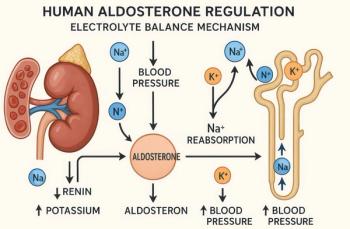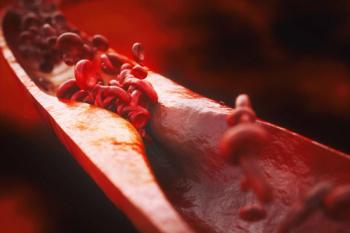
Man With Worsening Chest Discomfort
A 59-year-old man has had chest discomfort for several months. He firstnoticed the symptoms when he was doing heavy lifting and moving at work.The discomfort starts in the midsternal region and radiates to the left shoulderand arm. It is often accompanied by diaphoresis, but there is no dizziness ordyspnea. The discomfort always subsides a few minutes after the patientstops the activity that brought it on. More recently, he has experienced similarsymptoms while walking up steep hills on the golf course and dancing at awedding.
A 59-year-old man has had chest discomfort for several months. He firstnoticed the symptoms when he was doing heavy lifting and moving at work.The discomfort starts in the midsternal region and radiates to the left shoulderand arm. It is often accompanied by diaphoresis, but there is no dizziness ordyspnea. The discomfort always subsides a few minutes after the patientstops the activity that brought it on. More recently, he has experienced similarsymptoms while walking up steep hills on the golf course and dancing at awedding.
HISTORY
The patient had a bleeding peptic ulcer years ago but has had no recurrence;he occasionally uses H2-receptor blockers at night. He has degenerativearthritis in his hands and knees, for which he takes acetaminophen andibuprofen as needed. His health has otherwise been good. He has smoked 1/2to 1 pack of cigarettes daily since he was a teenager. His work involves heavyphysical labor. His father had a "heart attack" at age 62.
PHYSICAL EXAMINATION
The patient appears healthy and is in no acute distress. Head, eyes, ears,nose, and throat are normal. There are no distended neck veins and there isno hepatojugular reflux. Lungs are clear. Heart rhythm is regular, with no significantmurmurs or gallops. Abdomen is soft; there are no masses or bruits.Extremities display good peripheral pulses and no edema.
LABORATORY AND IMAGING RESULTS
Results of a hemogram and chemistry panel (including blood glucoselevel) are normal. Total cholesterol level is 189 mg/dL; high-density lipoproteincholesterol level is 42 mg/dL. An ECG reveals ST-segment depression of1.5 mm in leads V4 through V6 and leads I and aVL; no previous studies areavailable for comparison.
Which of the following is the most appropriate next step?
A. Refer for stress radionucleotide imaging.
B. Refer for exercise electrocardiography (stress electrocardiography).
C. Initiate a trial regimen of nitrates and aspirin; defer further testingpending the response.
D. Refer for GI studies of stomach and esophagus.
CORRECT ANSWER: A
This patient's symptoms fall in the gray area betweenchronic stable angina and unstable angina. However, withrespect to the management options presented here, thedistinction between the two does not affect the choice ofan evaluation method.
Based on the nature of the pain, the pattern of exertionprovocation followed by relief with rest, the patient'sage, and his history of heavy smoking, the risk of his havingsignificant (greater than 70% occlusion in an artery)coronary artery disease (CAD) is greater than 95%.1 Thus,this patient needs to be assessed for CAD. He does nothave "atypical" or "noncardiac" chest pain, which can beevaluated in a more leisurely manner for other, less seriouscauses. Thus, GI studies (choice D) are not appropriate.
Although CAD is strongly suspected in this patient,the diagnosis has not been confirmed. Techniques arecurrently available not only for confirming the diagnosisbut also for determining the extent of CAD and, thus, thedegree of risk. These tests greatly aid management aswell as diagnosis.
Before the advent of current diagnostic studies, empirictherapy with nitrates and aspirin would have beenprescribed. It is still advisable to give the patient nitratesand aspirin; however, further testing is required. Choice C,which recommends additional tests only if nitrates and aspirindo not produce improvement, is clearly inadequate.
Which "stress testing" procedure is best for this patient?Usually, an exercise ECG (choice B) is the study ofchoice. Exercise ECG has a high specificity (around 90%)but a lower sensitivity.2 In addition to aiding in diagnosis,exercise ECG provides prognostic data that, when organizedto yield a Duke treadmill score,3 can be classifiedinto categories of low, intermediate, and high risk (0.25%,1.25%, and greater than 5% annual mortality rates, respectively).Therefore, exercise ECG is an excellent initialstudy for most patients with suspected CAD.
However, one of the findings here precludes the useof exercise ECG. The patient's resting ECG demonstratesST-segment depression of more than 1 mm. Because theclassic finding in catheterization-proven CAD is ST-segmenthorizontal depression of 1 mm or greater on exerciseECG, this patient's resting ECG cannot be interpreted.Other findings that render exercise ECG noninterpretableinclude complete left bundle branch block,Wolff-Parkinson-White syndrome, electrically paced ventricles,and previous revascularization procedures.2
In patients with these findings, the appropriate studyis a cardiac stress imaging test, such as myocardial perfusionimaging (choice A). These studies have a sensitivityof greater than 90% for CAD and therefore result in fewerfalse-negatives than exercise ECG (although their specificityis only 60% to 75%4). Myocardial perfusion imagingalso provides superior prognostic data.44 For example, patientswith a normal perfusion study have a level of cardiacrisk identical to that of the general population; as a result,the workup is ended and catheterization is deferred.
Another option. Cardiac catheterization--althoughnot presented as one of the possible choices--would alsohave been a reasonable option for this patient. Catheterizationis the most accurate procedure for the diagnosis ofclinically significant CAD; furthermore, it supplies excellentprognostic data and provides an opportunity to treatCAD lesions in the same session. The Canadian CardiovascularSociety now recommends immediate catheterizationfor certain patients with chronic angina.2 As safety improves,cost decreases, and more therapeutic options duringcatheterization become available, this procedure willbe used more often.
Outcome of this case. The patient's myocardial imagingstudy showed reversible perfusion defects laterally andinferiorly. A subsequent catheterization revealed 90% stenosisof the circumflex artery proximally and 70% stenosisof the right coronary artery near mid vessel. Both lesionswere dilated and stented. After 1 month, the patient couldwork and play golf with no angina symptoms.
Newsletter
Enhance your clinical practice with the Patient Care newsletter, offering the latest evidence-based guidelines, diagnostic insights, and treatment strategies for primary care physicians.






















































































































































































































































































